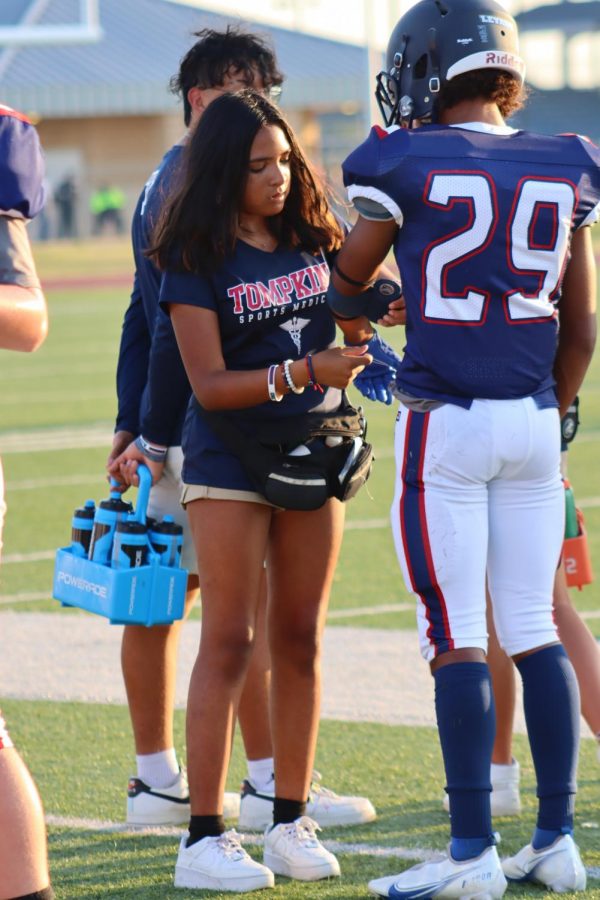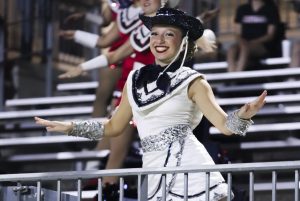Athletic Trainers Prioritize Health and Safety of Students
October 28, 2021
Athletic trainers are multi- skilled health care professionals that are essential to have in schools for students who participate in sports. Trainers make sure that every student is in shape and ready to practice without getting harmed or injured.
“Prevention of injuries is number one because if we can prevent the injuries from happening then that is better for everybody,” said Head Trainer Dallas Allmon.
Staff trainers are at the school from 6:30 in the morning until the last event of the night, and they work about 60 to 70 hours a week. Because there are so many sports programs happening after school, they have to be on call for any kind of emergencies that may take place.
“The hours are very tough,” said Allmon. “We work on weekends, holidays, summers and throughout the school year.”
When it comes to players getting injured, the student athletic trainers are usually the first to address the wound and help out with basic first aid. If the injury is more serious, then staff athletic trainers are supposed to be the first point of contact so that they can properly handle the situation.
“The students take care and help assist with some of the rehabs, and they help tape before games and practices,” said Allmon. “At practice, their duty is to make sure everybody is hydrated, and to take care of anything that comes up quickly in order to get the athlete back out on the field.”
Staff athletic trainers will meet with the coaches in order to establish some basic information about how they can help keep their athletes in good shape and unharmed. This can simply be making sure all athletes have the proper form in the weight room, or are not doing too much for their body to take.
“I think we really do a good job of working with the coaches to make sure that our off-season programs, our strength and conditioning programs, are up to speed because if the kids are doing what they’re supposed to do in the weight room that helps them stay healthy,” said Allmon.
To be an athletic trainer students must go through a strict background check that includes history of grades, how they act in classrooms, and a number of other things that help conclude whether they will be a good fit for the program. Coaches will talk to teachers and parents as a part of the application process in order to make a final decision.
“We are pretty strict about who we let in because it is serious, it could literally be a life or death situation, so we have an application process that you would need to talk to me to receive,” said Allmon.
When it comes down to it, athletes that get seriously injured are required to see a medical professional outside of school grounds. Whether that has to be a hospital or a sports chiropractor, long term injuries that can affect their performance must be taken care of with extra assistance from doctors.
“We want to be the first point of contact for that injured person and their parents. If there needs to be a referral out to a doctor, we help them with that,” said Allmon. “And then on the back-end, we deal with the long term rehabs and treatments and making sure everybody gets back as quickly as they can.”






